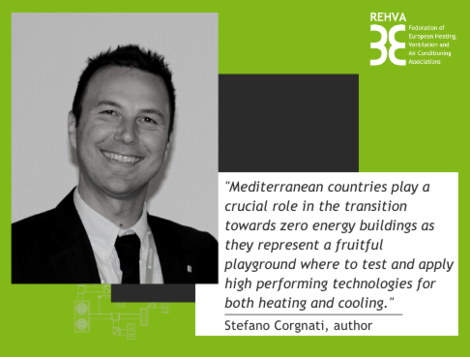Guidebook No. 31
Authors: Ahmet Arisoy, Stefano Corgnati, Murat Çakan, Livio Mazzarella, Cristina Becchio, Pedro Vicente-Quiles, Orhan Ekren, Turgay Yay, Federico Dell’Anna, Marta Bottero, Carola Lingua, Macit Toksoy, Sinan Aktakka, Z. Haktan Karadeniz, Neşe Ganiç Saglam
This guideline has been prepared by a REHVA Task Force whose members are mainly from Mediterranean member countries. The aim of the guideline is to support, in a practical way, a design process for realizing Nearly-Zero Energy Buildings (NZEB) in the context of Mediterranean-climate, focusing more on the mechanical systems than on the building envelope, which has previously been treated in Part 1 (REHVA Guidebook No. 28). The Guidebook covers the design of Heating, Ventilation and Air Conditioning (HVAC) systems, energy recovery and free cooling aspects, renewable energy adaptation, and innovative system design approaches. Fundamental design and selection methodology has also been included.
The main objective behind this guidebook is to present and promote the use of equipment, technology and systems appropriate to the cooling-demand– dominated requirements of the Mediterranean climate. Reducing the energy needs and the non-renewable energy use, identification of passive cooling techniques, selection of the right ventilation strategy, exploiting the high solar energy potential of Mediterranean sites, and balancing fenestrations and shading device design are challenges posed by the Mediterranean climate.



